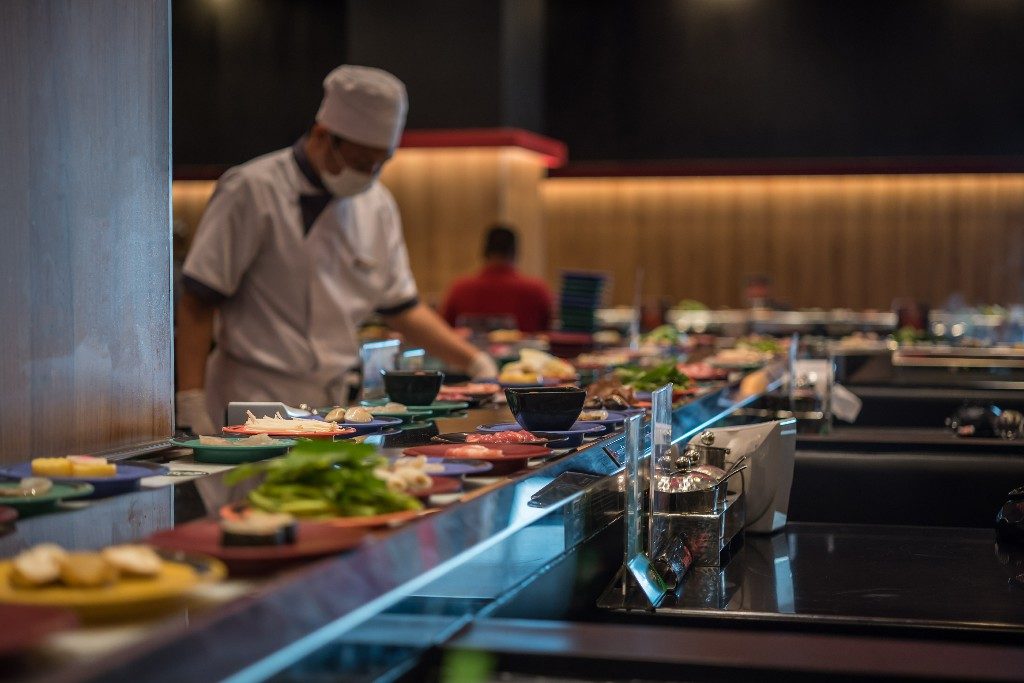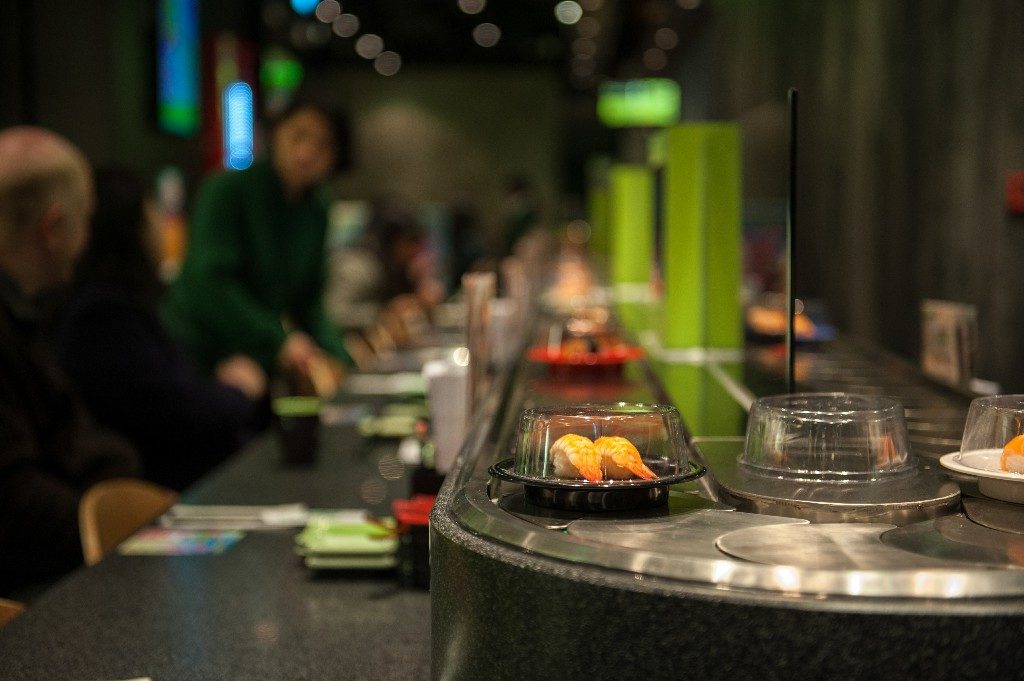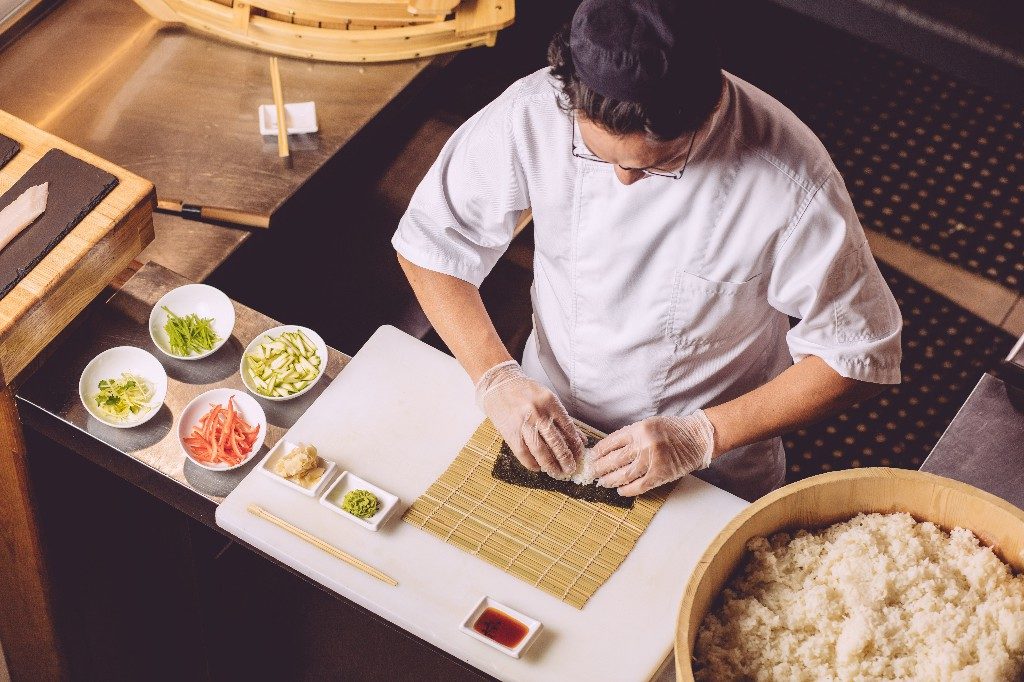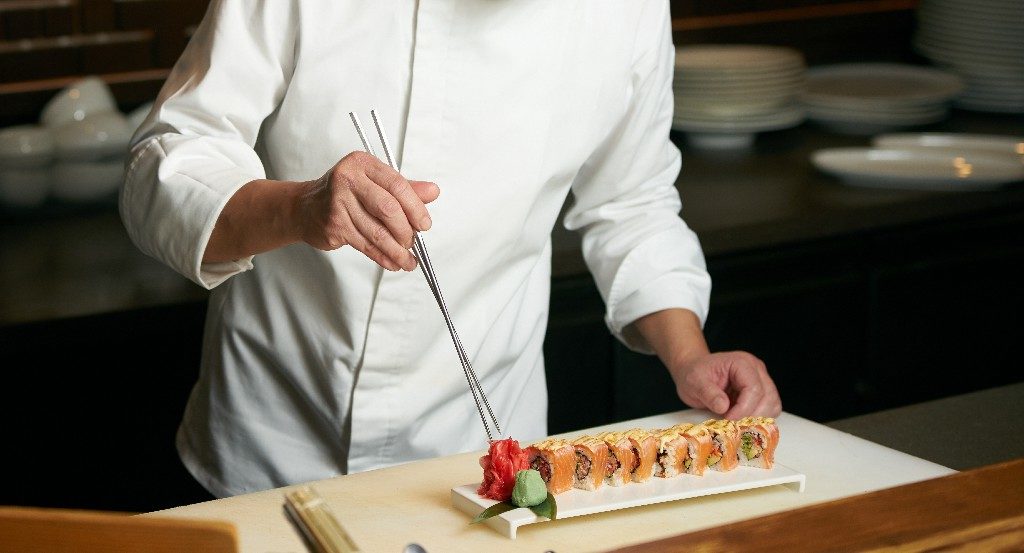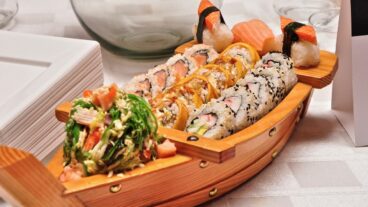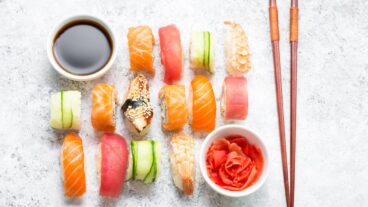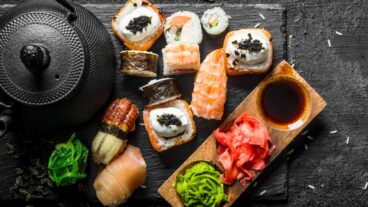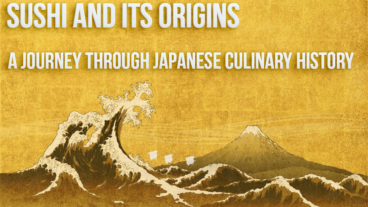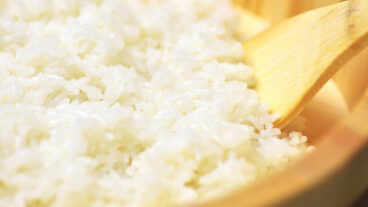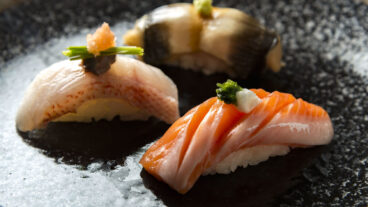With the popularity of sushi growing worldwide, Conveyor Belt Sushi or Kaitenzushi has become increasingly popular in the States as well as countries across the world. However, given the difference in the process of sushi making and the tradition surrounding it, can it really be considered sushi? For that purpose, we will be taking a look at the main differences between Conveyor Belt Sushi [Kaitenzushi] and Traditional Sushi as well as outline the different experiences they both provide.
A discussion on Sushi is not complete without Japan; as such, we will look at this topic from both an international as well as Japanese perspective. We will touch on not just the quality of the sushi as well as how the experience can greatly vary depending on which part of the world you are in.
Quick Navigation
Conveyor Belt Sushi
Conveyor Belt Sushi [Kaitenzushi] as the name suggests is sushi that is served upon a conveyor belt that runs the length of the table in a restaurant. Different kinds of sushi are made by the chefs and placed upon the belt in tiny dishes which are then carried along to the customers on the other side. Conveyor Belt Sushi is usually made at a very fast pace as the rice is portioned off using sushi machines. The chefs then add the toppings and place them onto the plates for serving. This type of sushi usually has a larger portion when it comes to filling. This is because since each and every sushi is pressed using a robot, the dimensions and thickness are maintained with great uniformity. In addition to this, Conveyor Belt Sushi is also much cheaper compared to Traditional Sushi. This is because Sushi can be prepared at a much faster rate compared to traditional sushi. For example, an extremely skilled sushi chef can roll and prepare about four sushi per minute. On the other hand, a sushi machine can prepare from 10-12 sushi a minute, and up to 2000 an hour. Depending on the sushi machine you have chosen, you can easily adjust the sushi production to your restaurant’s needs. Interested in checking out three different kinds of nigiri sushi machines? This article will tell you everything you need to know about the nigiri sushi machine.
Taking advantage of this technology, Conveyor Belt Sushi restaurants can provide high speed quality sushi to their customers at a very low price by eliminating the need for time consuming labor.
Traditional Sushi
Traditional Sushi relies heavily on the hubristic and traditional nature of preparation surrounding sushi. A traditional sushi restaurant would involve customers sitting down in front of a bar where a sushi chef would approach them and ask them for their preferences. Once confirmed, the sushi chef would then hand roll, and gently put together each individual sushi, starting from pressing and rolling the rice, to slicing the fish and even adding the soy sauce on top. It is an experience that really reaches out and makes the meal feel special as it feels like each individual sushi has been custom made and tailored for the individual in question. This luxury does come at a cost though; the cost being time and a much higher price point. As traditional sushi is made keeping the customers’ taste in mind and is hand made, the process of preparation is much more diverse and time consuming. Not to mention the all important human element that prevails throughout the experience, from the Irrashyamase! [いらっしゃいませ!] (Welcome!) to the subtleties of dining Japanese culture is famous for and of course the pure skill and expertise involved in making the sushi itself. Traditional sushi is something that should be experienced to be understood.
In the market for a Traditional Sushi Machine? Check out our sushi machine listing! We offer a wide range of sushi machines that can make both traditional nigiri sushi or adventurous sushi rolls.
Is there a clear winner? Traditional Sushi Vs Conveyor Belt Sushi
Based on the notion of this article, such a question would be misguided I believe. Traditional sushi, as well as conveyor belt sushi, have their individual calibers, as well as separate niches. If there is a difference at all, it comes down to what one is looking to gain from the experiences.
In retrospect, both Traditional Sushi, as well as Conveyor Belt Sushi, are delicious in their own right. One offering delicious filling and fast access with a cheap and affordable price point, while the other delivers on a luxurious and extremely individualistic experience. Both have their own place on the table and to single either one out would be a crime, given how they are both delicious in their own right.
That being said, there are enthusiasts for both Traditional Sushi as well as Conveyor Belt Sushi. And both parties have the incentive to be as such.
Is Sushi made with a Sushi Machine authentic?
One of the common questions that we are often asked is if Sushi that is made with a Sushi Machine can be considered authentic. After all, isn’t the point of sushi meant to be something that is hand made?
To that, we have one simple answer. Yes.
Sushi made by a Sushi machine only helps mix, segment and flatten rice. The actual sushi requires an actual chef to assemble and bring together to create the final product. If anything, it can be considered a partnership. The merging of the expertise of man with the accuracy of a sushi machine. One that allows for a delicious experience while still keeping both costs as well as time requirements low.
Purchasing your own Sushi Machine
If you are looking to enjoy delicious authentic Japanese Sushi in the comfort of your own home, start a new business or even expand on a currently existing one, we can help you find the perfect Sushi Machine. With our sushi specialists and years of expertise in the field, we can assist you in finding the sushi machine that is just right for your business and needs. We are a multilingual team working from Tokyo, Japan and can assist in a variety of languages including English, Spanish, Chinese and Japanese. If you are interested in learning more or wish to speak to one of our sushi specialists, please feel free to reach out to us via the Contact Page.

